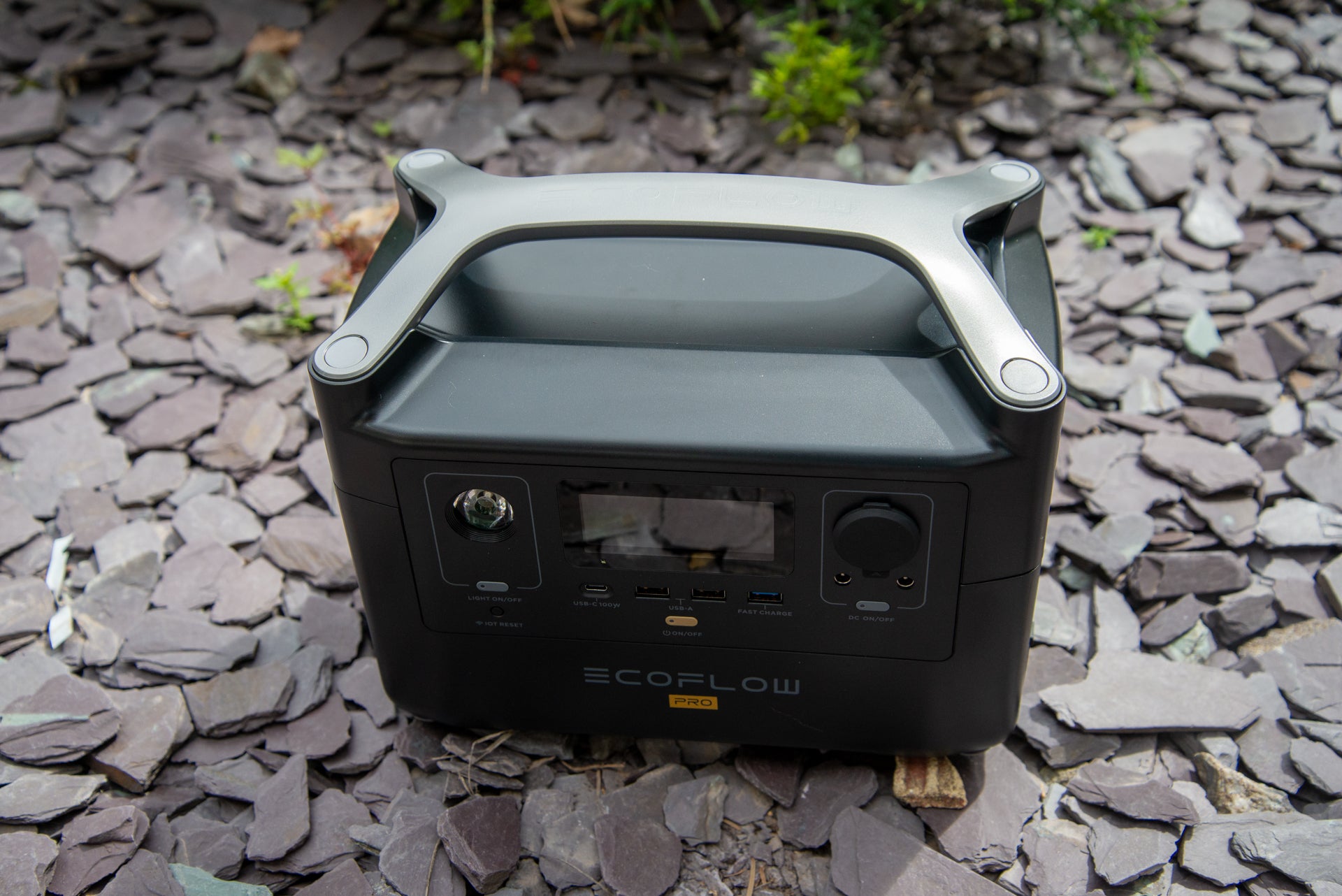Verdict
Powerful, flexible and expandable, the EcoFlow River Pro is the power brick you need for weekend’s camping. It tops up to 80% within an hour from the mains, although you can charge from the car or buy the optional solar panels.
With dual AC outlets, able to power devices up to 1200W, this is a device that can even power a hairdryer or travel kettle. It’s well priced and simple to use, but the orientation of the power sockets may mean that one gets blocked, and the hinge on the flap that covers the charging flap could be more robust.
Pros
- Powers devices up to 1200W
- Dual AC output
- Long-lasting power
Cons
- AC sockets can get obstructed
- Flimsy charging flap
-
Battery lifeThere’s a 720Wh battery in this brick, so expect around 4.5 hours of a projector, or around 60 charges of an iPhone 13 Pro. -
Charging optionsYou can use mains power to charge the battery to 80% in one hour, but you can charge more slowly if you use the car adaptor or solar power.
Introduction
With so much of our lives centred around technology, having the ability to power our devices anywhere is getting more important. From long car journeys to camping trips and everything in between, a large battery with proper power sockets on it makes a lot of sense. Capable of powering devices up to 1200W, the Ecoflow River Pro is a super-powerful option for all types of devices.
The flap covering the charging ports is a little delicate and I’d prefer the power sockets to have a different orientation but this is, otherwise, an excellent portable battery.
Design and features
- Solar, car and mains charging
- Dasy-chain port
- Powers devices up to 1200W
The EcoFlow River Pro sits in the middle of the River range, and has a 720Wh battery. There’s also the smaller EcoFlow River, which has a 600Wh battery and the EcoFlow River Mini with a 210Wh battery. Then, there’s the EcoFlow River Max, which has a total capacity of 576Wh, but the bottom half is a detachable 288Wh battery that’s easier to carry around.
For me, the EcoFlow River Pro is a good combination of power and portability. Sure, I wouldn’t want to carry its 7.6kg weight around too much, but it’s light enough to take in a car and powerful enough to cope with a weekend of camping. Its sturdy handle certainly makes carrying this around a lot easier.
It’s a product that’s designed to be convenient with multiple charging options all hidden underneath a flap at the side of the unit. I found this flap very stiff to open at first, plus it’s only held on by a couple of feeble pins. On my review unit, the right-hand pin snapped off, although the flap would still clip into place.
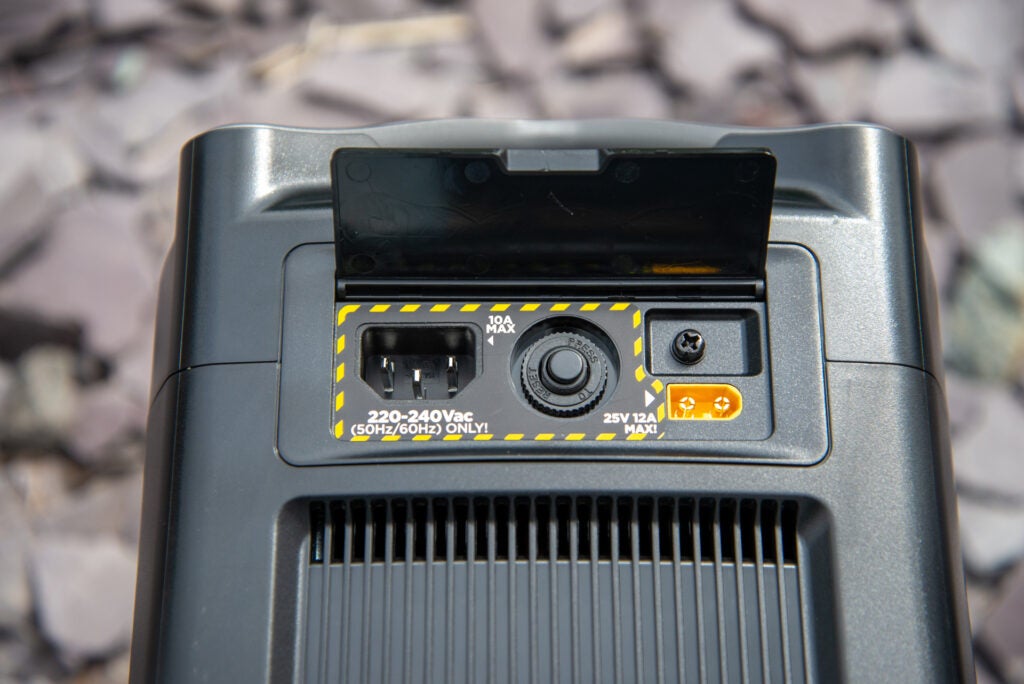
There are three charging options. Mains via a standard kettle lead delivers up to 10A of power, which is enough to charge the battery to 80% capacity in just one hour and 1.6-hours to fully charge it.
Go for car charging via the 12V input (lead included) and you’re looking at eight hours to charge. Buy the optional solar panels and you can charge in four to eight hours (2x 110W panels, £319 each) or six to 12 hours (with 1x 160W panel, which costs £379)). The variance is there because the total amount of sunlight will make a difference.
EcoFlow says that the battery is designed to last for 800 cycles at 80%+ capacity. Given the level of power on offer and when you’ll likely use this, this battery should last for many years.
If you think that 720Wh isn’t quite enough then you can add a second EcoFlow battery (another 720Wh) to double capacity, although that does increase the price by £549.

As with the similar, but lower-powered, Anker PowerHouse II 400 (388Wh), the EcoFlow River Pro can power ‘real’ devices with its AC power outlets. Here, you get two normal UK power sockets, double the number on the PowerHouse II.
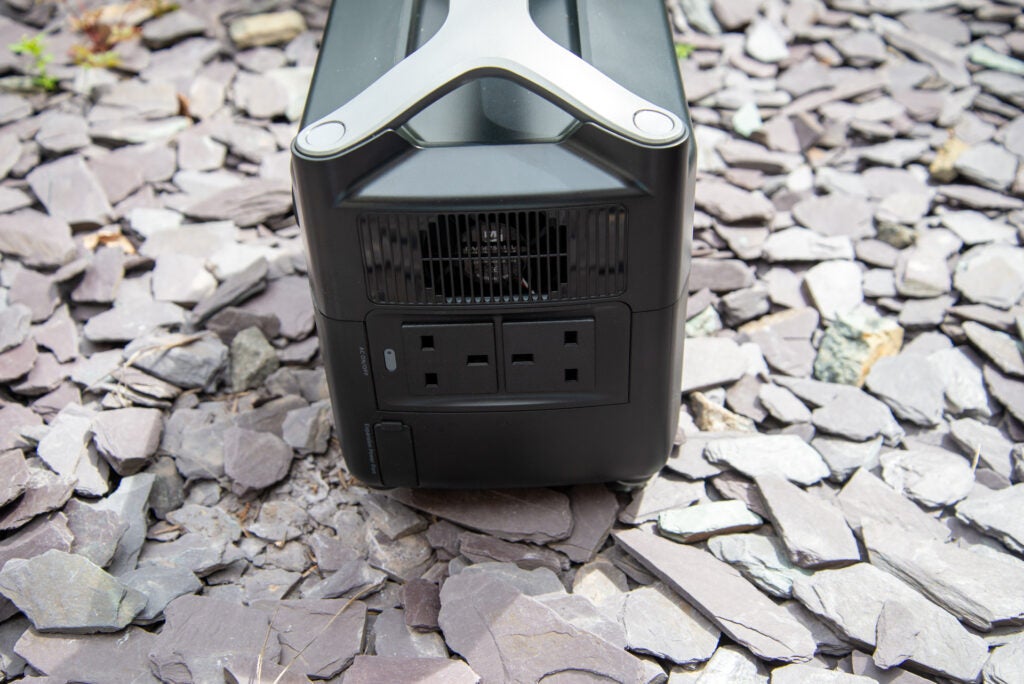
There’s another key difference, too. With X-Boost, the EcoFlow River Pro can power devices up to 1200W (its 300W on the PowerHouse II), although the normal range is up to 600W. With this kind of power on tap, the EcoFlow River Pro can handle some hairdryers, travel kettles and coffee machines. That’s posh camping on tap.
Of course, that amount of power is also useful for using both power sockets at the same time, although orientation may stop you. Rather than installing the sockets in the normal orientation for a double plug socket, the EcoFlow River Pro has the two sockets facing each other. Depending on the type of device that you’re using, you may find that one socket gets obstructed, which can be annoying.
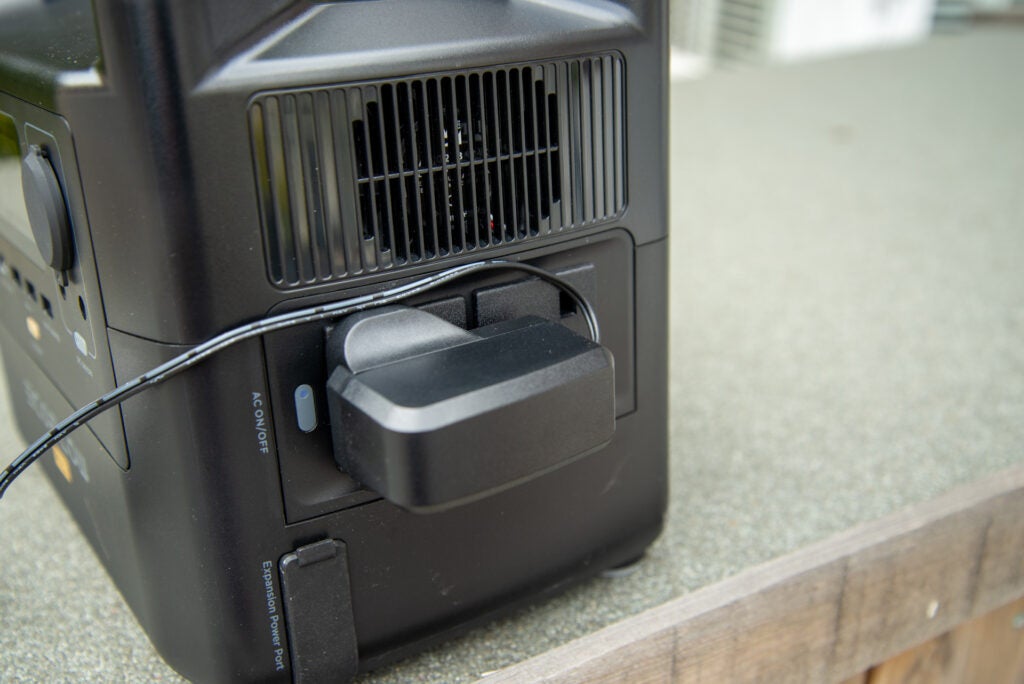
Alongside the AC outlets, there’s a 100W USB-C output, two standard USB-A sockets, and a Fast Charge USB socket. Plus, there’s a standard car output (13.6V) and two DC5521 13.6V outputs.

And, there’s even a torch on the front, which is kind of useful for seeing what you’re doing when plugging cables in and out, but given the weight of the battery, I didn’t find this torch particularly useful for walking around with.
The main On/Off button turns the EcoFlow River Pro on and off alongside the USB ports, but there are separate buttons to turn DC and AC power on and off. The AC power button is in a slightly annoying position and can be obscured by a device plugged in.
With the EcoFlow River Pro turned on, the screen shows the current power draw and the estimated battery time remaining in hours and minutes, plus there’s a battery percentage meter, too. A quick tap of the On/Off button will turn this screen off: a useful feature if you’re using the battery in a tent.
There’s nothing that you can control from the device, but there is the option to hook it up to Wi-Fi for remote monitoring and control via the smartphone app. I found it a little fussy to connect.
First, I had to connect to the EcoFlow River Pro’s own Wi-Fi network, but the app told me that there was a ‘serial number not recognized’ error. I had to wait for the Wi-Fi light on my iPhone to go solid, changing from the 4G/5G indicator, and then the app worked.
With the EcoFlow River Pro connected to Wi-Fi, the app tells you how much power it’s currently putting out and any input power coming in. It’s possible to turn the AC and DC ports off, but I couldn’t turn the EcoFlow River Pro off itself this way. There’s also an option to turn X-Boost off, although that limits you to 600W devices only.
Perhaps if you have the EcoFlow River Pro connected to solar panels in an outbuilding, the app may be useful for monitoring, but I didn’t find it a very useful feature at all. That’s doubly so when camping, when there’s no Wi-Fi network for the EcoFlow River Pro to connect to.
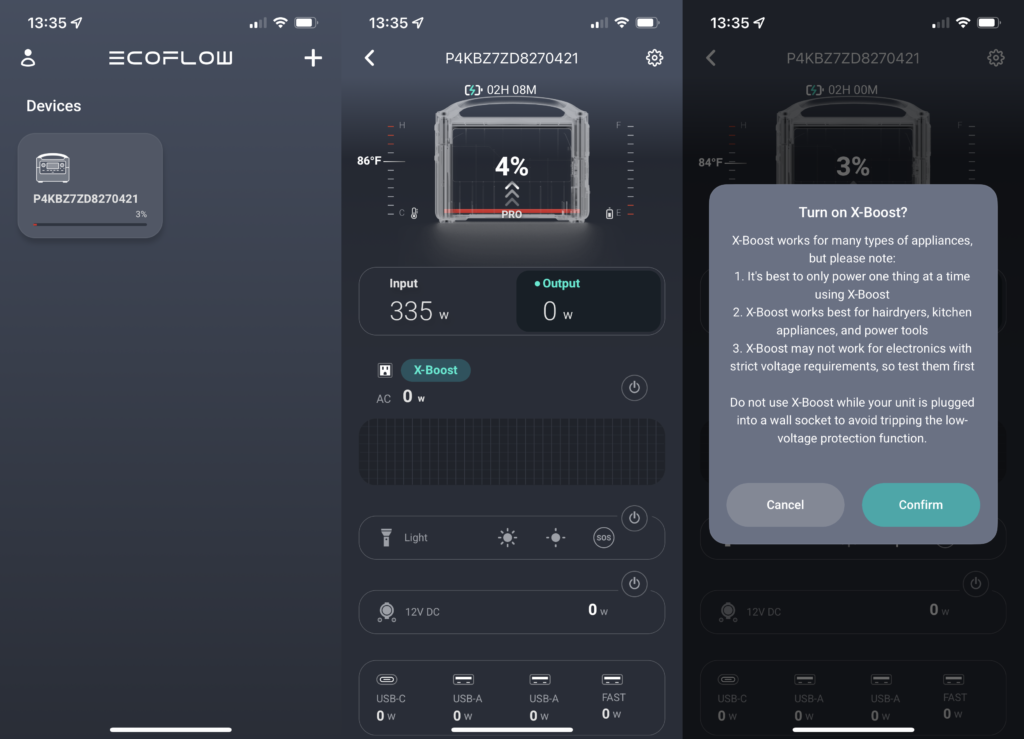
Performance
- Hugely long-lasting
- Deals well with powerful devices
I took the EcoFlow River Pro camping for a weekend, where it served as all the power I needed, including using a pump to blow up air beds, charging multiple phones and tablets, and even powering a set of TCP LED+ Outdoor Festoon Lights. Over two nights, the EcoFlow River Pro only dropped to 54% power, proving to be more than enough for my sparse needs.
So, what about a more powerful test? For that, I used an XGIMI Horizon projector in the garden, powering it via the EcoFlow River Pro. With the Anker PowerHouse II, I could manage just over two-hours of viewing; with the River Pro, I got just over four and a half hours. That’s enough for two regular-length films (on average) or even one of the extended Lord of the Rings films.
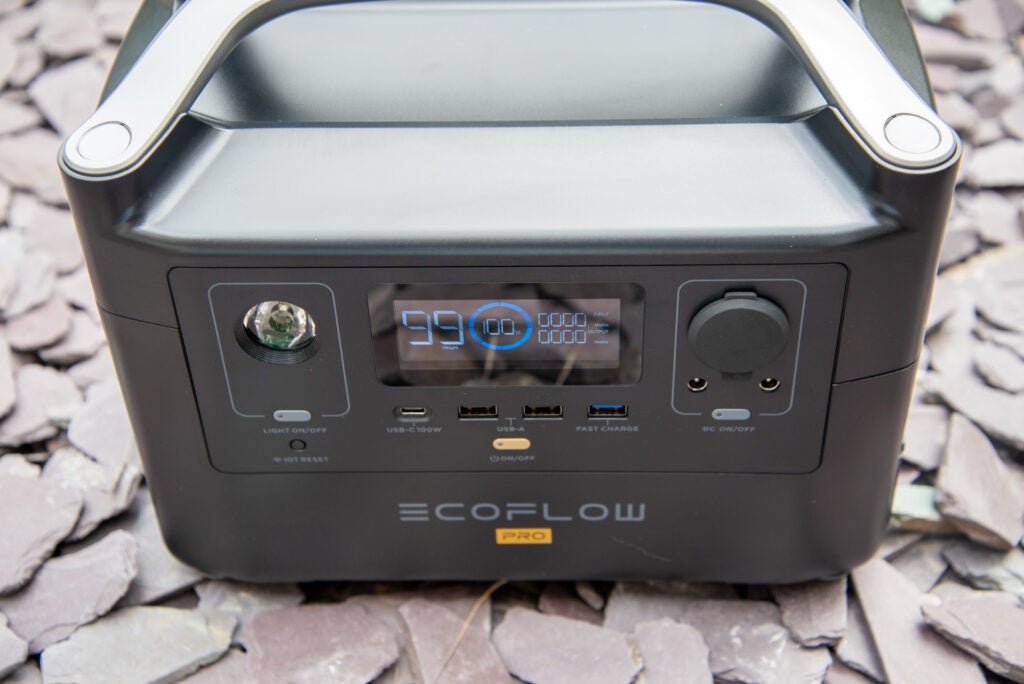
Latest deals
Should you buy it?
If you’re regularly away from the mains, such as going camping, this is a great battery for powering all of the devices and equipment that you’ll likely need.
If you need even more power, there are bigger batteries; those that will only charge phones and similar devices may prefer a smaller battery.
Final Thoughts
If you’re regularly away from a power source, whether that’s in your car or because you go camping a lot, the EcoFlow River Pro has the power to deal with your off-grid needs. For regular, tablet, phone and lights, you should see the battery last for a few days before it needs recharging. Yet, it has the ability to deal with more powerful devices, too.
It’s comparatively well priced, given the size of the battery inside, and the dual AC slots add flexibility, assuming that one device doesn’t block the second port. I didn’t find the Wi-Fi connection that useful and the flap covering the charging ports could be more robust, but these niggles aside, this is an excellent portable battery.
How we test
We test every battery station we review thoroughly over an extended period of time. We use standard tests to compare features properly. We’ll always tell you what we find. We never, ever, accept money to review a product.
Find out more about how we test in our ethics policy.
We test with a variety of devices to see how long the battery will last.
We test different charging methods to see how quickly the battery can be topped up.
FAQs
It can power devices up to 1200W.
Yes, you can daisy-chain an additional battery to double capacity.
Sustainability
TrustedReviews’ holds the fact that global warming is not a myth as a core value and will continuously endeavor to help protect our planet from harm in its business practices.
As part of this mission, whenever we review a product we send the company a series of questions to help us gauge and make transparent the impact the device has on the environment.
We currently haven’t received answers to the questions on this product, but will update this page the moment we do. You can see a detailed breakdown of the questions we ask and why in our sustainability info page.



















